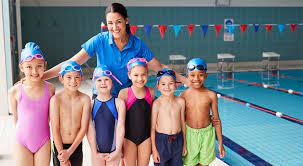If you’ve ever thought about becoming a swim teacher, you might be wondering: are swim teachers really in demand? Short answer: absolutely yes — and the need is growing faster than most people realise. With water safety becoming a national priority, completing a water safety course is no longer just a ‘nice-to-have’ — it’s the ticket to making a real difference.
Quick Answer:
- Yes, swim teachers are in high demand across Australia.
- Rising drownings, increased pool access, and school programs drive urgent need.
- Completing a water safety course boosts employability and community impact.
But why exactly is the demand booming? And what should you know before diving in (pun fully intended)? Let’s wade through it.
Why are swim teachers in such high demand in Australia?
It’s not just about kids learning to float anymore. Australia’s obsession with the water — from backyard pools to coastal beaches — means water competence is critical. Sadly, drowning statistics are a harsh reminder.
According to Royal Life Saving Australia, there were over 280 drowning deaths reported last year. That’s not just a number. That’s countless families forever changed.
Schools, councils, swim schools and even holiday programs are scrambling to find qualified instructors who can help stem the tide. Some reasons fuelling this surge include:
- Expanded school curriculums mandating aquatic education.
- A post-COVID skills gap, with many older instructors retiring.
- More pools and aquatic centres opening across suburban and regional areas.
- Parents prioritising water safety after media coverage of tragic accidents.
Anyone who’s tried to book swimming lessons recently knows—waitlists are months long. Good swim teachers? Gold dust.
What qualifications do you need to teach swimming?
You can’t just show up with a whistle and good intentions. (Although, the whistle does help.)
To be employable, you’ll need to complete a recognised water safety course that covers practical skills and accredited teaching methods. Typically, you’ll need:
- A nationally recognised swimming teacher certification (like the AUSTSWIM Teacher Licence).
- First aid and CPR training.
- Child safety checks (Working With Children Check in your state).
The beauty? Most programs — especially through reputable providers — are designed to get you qualified quickly, often within a few months.
Real talk: Anyone who’s done a crash course over a summer knows — it’s intensive, sweaty, and occasionally nerve-wracking. But it’s also one of the most rewarding gigs you’ll ever have.
Is a water safety course really worth it for career opportunities?
Short answer? Absolutely.
A quality water safety course doesn’t just tick a box for employers. It proves you can:
- Teach survival skills under pressure.
- Manage diverse groups (toddlers having tantrums? Yep, you’ll be ready).
- Instil lifelong habits that literally save lives.
In many cases, employers will prioritise candidates who’ve completed recent, well-regarded courses — even over those with years of casual teaching experience. Authority matters. Certification matters.
You might think: “I know how to swim well — isn’t that enough?”
Spoiler: It’s not. Teaching safe, structured aquatic skills requires a whole different toolbox. And parents, rightly, demand the best.
What types of jobs can qualified swim teachers get?
Forget the image of being stuck in a tiny indoor pool yelling “kick, kick, kick!” all day (although yes, there’s a bit of that). Swim teaching today offers diverse and surprisingly flexible career options, including:
- Learn-to-swim programs (babies through adults)
- Surf schools and open water programs
- School aquatic programs during terms
- Private coaching and high-performance swim squads
- Disability and inclusion aquatic programs
- Community health and refugee swimming initiatives
Some instructors even travel seasonally — teaching in regional areas during summer, then heading back to city centres for term-based work. Pretty good gig, right?
Real-world reflection: What it’s actually like teaching swimming
Anyone who’s spent a morning in a steamy pool hall with 20 wriggly five-year-olds knows: swim teaching isn’t always glamorous.
- Wet towels everywhere.
- Echoes of “Muuuummm!” bouncing off the walls.
- Goggles breaking mid-lesson.
- A persistent smell of chlorine you can never quite scrub off.
But then there’s that moment when a kid who clung to the pool wall for weeks suddenly pushes off and floats, grinning like it’s Christmas morning.
That makes it all worth it.
And here’s something seasoned instructors will tell you — it’s not just about swimming. It’s about confidence. Resilience. Trust. And, occasionally, managing a class while dodging rogue pool noodles.
FAQs
How long does it take to complete a water safety course?
Most introductory courses can be completed in 4–8 weeks, depending on your schedule. Intensive short courses (great for uni students and career changers) can sometimes be finished in a few weekends.
Is swim teaching a good side hustle?
Absolutely. Many instructors pick up casual or weekend shifts around studies, parenting, or other jobs. The flexibility is a major bonus, especially during peak summer seasons.
Do swim teachers earn good money?
Entry-level pay is modest (around $25–$30/hour casual), but experienced instructors or specialists (like infant aquatic teachers) can earn $45/hour or more, especially during private lessons or peak demand.
Final thoughts: Why it’s time to dive in
If you’ve been flirting with the idea of teaching swimming, there’s never been a better time. The country needs passionate instructors more than ever.
And completing a high-quality water safety course isn’t just a career move — it’s a way to make a tangible difference.
You’ll build skills that employers value, create unforgettable memories, and — honestly? — you might just save a life one day.
For those interested in making a splash across a variety of aquatic careers, check out opportunities via AUSTSWIM, Australia’s leader in aquatic education.
If you’re curious about broader swimming and aquatic program offerings, explore the full range available at AUSTSWIM Programs to see where your next move could take you.

